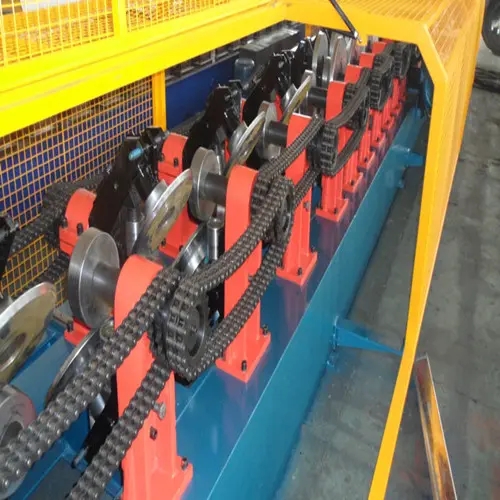
Understanding Straight Seam Tube Rolling Mills
Straight seam tube rolling mills are crucial in the production of high-quality welded steel tubes. They play a significant role in various industries, including construction, manufacturing, and automotive, where steel tubes are extensively used. This article delves into the technology, process, and benefits associated with straight seam tube rolling mills.
The Technology Behind Straight Seam Tube Rolling Mills
Straight seam tube rolling mills utilize advanced machinery that can continuously produce steel tubes from a flat strip of metal. The process begins with the raw material, typically hot-rolled steel strips, which are unwound and fed into the mill. These strips are then subjected to various mechanical processes that reshape them into cylindrical tubes.
The essential components of a straight seam tube rolling mill include the uncoiler, accumulator, forming section, welding unit, and cooling section. As the flat strip passes through the forming section, rollers gradually bend it into a tubular shape. To join the edges of the tube together, a high-frequency welding process is employed, which involves rapidly heating the edges until they are molten and then forging them together. This method ensures a strong and durable weld.
The Rolling Process Explained
The rolling process of a straight seam tube mill can be described in several key stages
1. Uncoiling The steel strip is unwound from a coil and straightened for ensuring proper feeding into the mill.
2. Forming The straight strip enters the forming section, where it’s progressively shaped into a round tube through a series of rollers known commonly as fin passes.
3. Welding The edges of the tube are heated using high-frequency currents and then welded together in a seamless manner. Modern mills often employ laser or electric resistance welding techniques to ensure maximum strength of the weld joint.

5. Cooling Following sizing, the tube is cooled to ambient temperature. This is typically done using water sprays or other cooling methods to stabilize the structure of the metal.
6. Cutting Lastly, the tube is cut into required lengths, ready for transportation or further processing.
Advantages of Straight Seam Tube Rolling Mills
Straight seam tube rolling mills offer several advantages, making them preferred choices for manufacturers
- High Production Efficiency These mills are designed for continuous operation, significantly reducing the time taken to produce tubes compared to traditional methods.
- Quality Control The automated nature of the mills allows for tight tolerances and consistent quality. Advanced sensors and monitoring systems ensure that any deviations in size or material properties are detected and corrected promptly.
- Versatility Straight seam mills can produce a wide range of tube sizes and thicknesses, making them suitable for various applications. Depending on the setup, they can accommodate different steel grades and allow for customization according to customer specifications.
- Cost-Effectiveness By streamlining the production process, straight seam tube rolling mills minimize waste and energy consumption, leading to reduced operational costs.
Conclusion
In conclusion, straight seam tube rolling mills represent a pivotal advancement in the manufacturing of steel tubes. With their sophisticated technology and efficient processing capabilities, they meet the high demands of diverse industries while maintaining quality and sustainability. As industries evolve, the adaptability and efficiency of straight seam tube rolling mills will continue to play a significant role in shaping the future of tube manufacturing. Whether for structural applications or specialized use, these mills are indispensable in modern manufacturing practices.